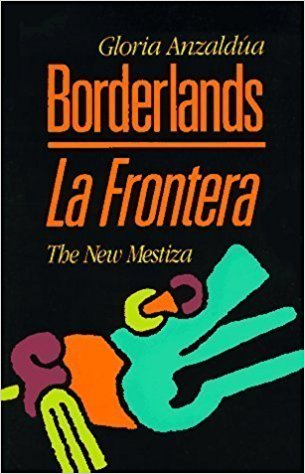“So, if you want to really hurt me, talk badly about my language. Ethnic identity is twin skin to linguistic identity—I am my language.” —Gloria Anzaldua, “How to Tame a Wild Tongue”
Gloria Anzaldua’s “How to Tame a Wild Tongue” is now an iconic translingual text. Originally published in 1987, Anzaldua’s text is visceral, difficult, inspiring, and raw. And remains so to this day. Not only does “How to Tame a Wild Tongue” defy linguistic conventions—the text moves from English to Spanish to Chicano Spanish without translating or pausing and moves from theoretical discourse to the language of the home and/or the street—it also defies genre conventions—moving from something akin to academic discourse to personal narrative and shifting in time and perspective. As such,  students often have equally strong reactions to the text, either loving or hating it and Anzaldua. Alternatively, some students may attempt to disengage with the text because of the difficulty. Because of this, I recommend several sessions to work through the text.
students often have equally strong reactions to the text, either loving or hating it and Anzaldua. Alternatively, some students may attempt to disengage with the text because of the difficulty. Because of this, I recommend several sessions to work through the text.
Anzaldua makes strong arguments about linguistic oppression, both from the dominant and Spanish-speaking cultures. Here are some examples of her position:
“Attacks on one’s form of expression with the intent to censor are a violation of the First Amendment. El Anglo con cara de inocente nos arranco la lengua. Wild tongues can’t be tamed, they can only be cut out.”
“Chicanas who grew up speaking Chicano Spanish have internalized the belief that we speak poor Spanish. It is illegitimate, a bastard language. And because we internalized how our language has been used against us by the dominant culture, we use our language differences against each other.”
This text can be examined as an example of code-meshing or translanguaging or considered as a political argument. You could pair this with other texts that focus on Spanish, such as Marjorie Agosin‘s essay and poem. Or, you could consider this in conjunction with other texts that argue for the legitimacy of non-standardized language such as June Jordan‘s. Additionally, you may also choose to discuss this as a literacy narrative like Min-Zhan Lu‘s. However, Anzaldua’s piece can certainly stand alone.
This freewrite might help to open up a discussion:
Consider your experience as a reader of “How to Tame a Wild Tongue.” How and in what sense is this reading experience equivalent to what Anzaldua calls the “borderland”? What does your position as a reader on the border reveal to you about the nature of encounters across cultures in multicultural America? What “borderlands” exist in your life?
Anzaldua, Gloria. “How to Tame a Wild Tongue.” Borderlands/La Frontera: The New Mestiza, Aunt Lute Books, 1987, pp. 53-64. You can find .pdf of the chapter here.
